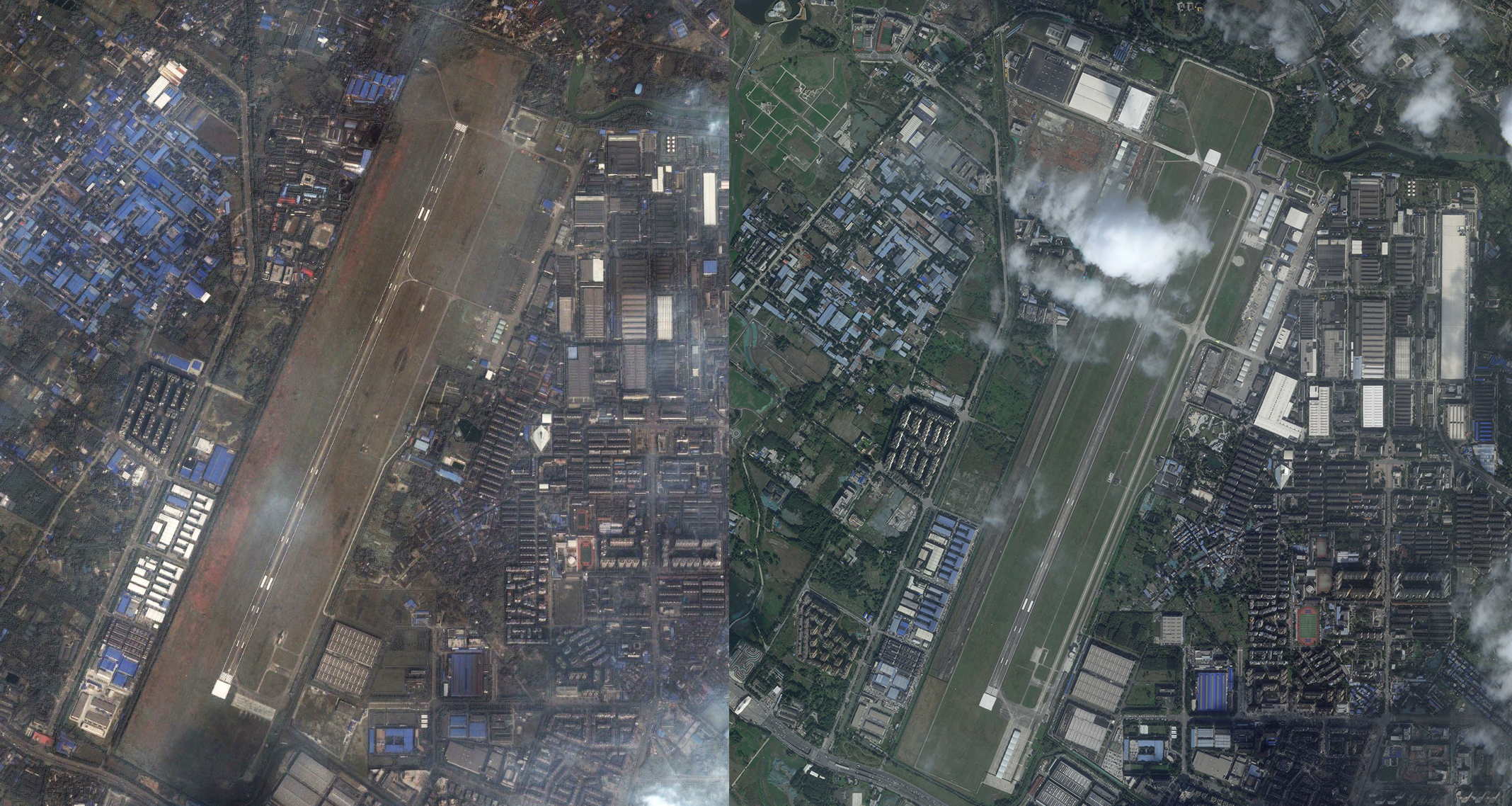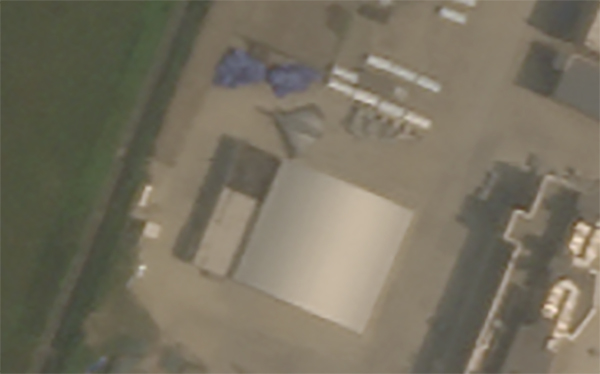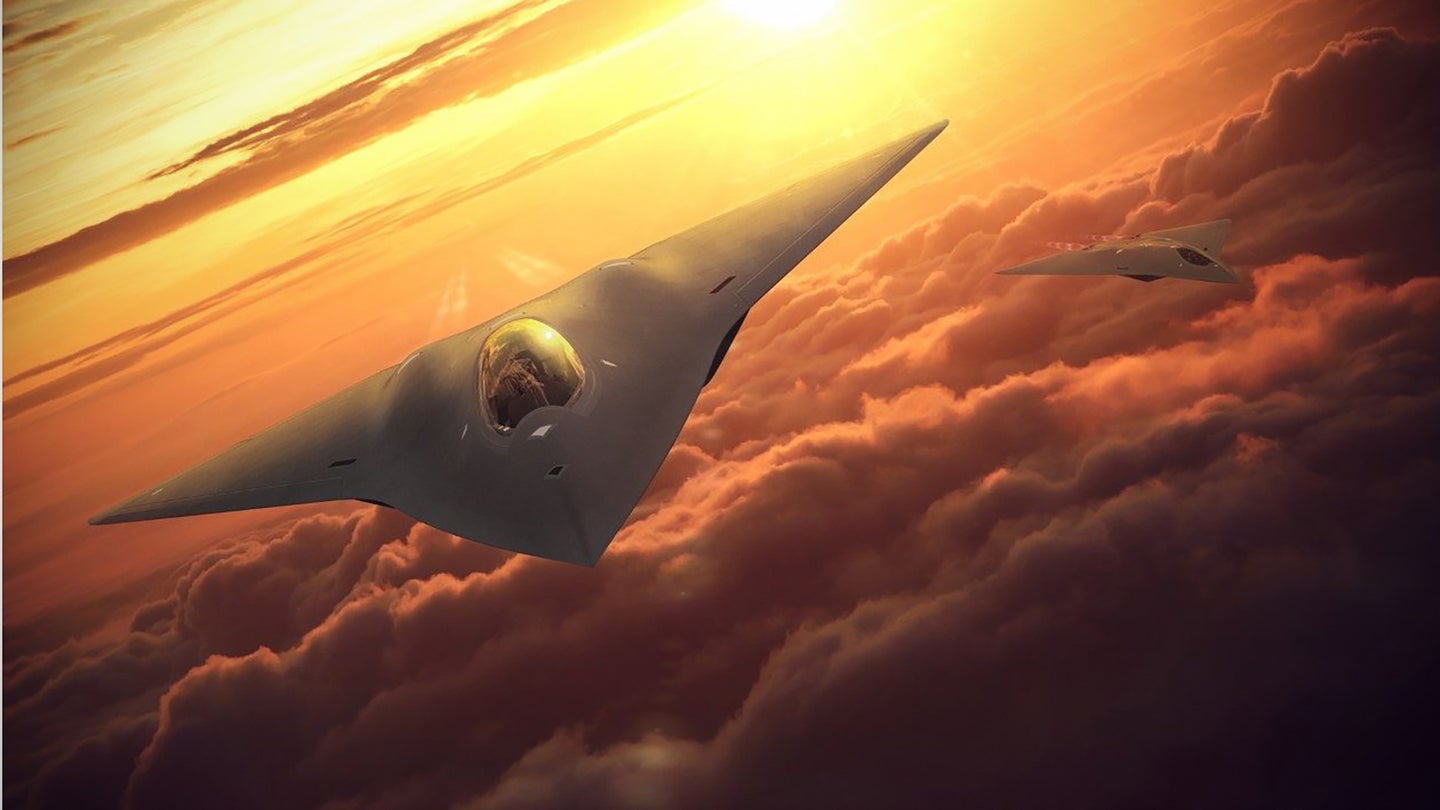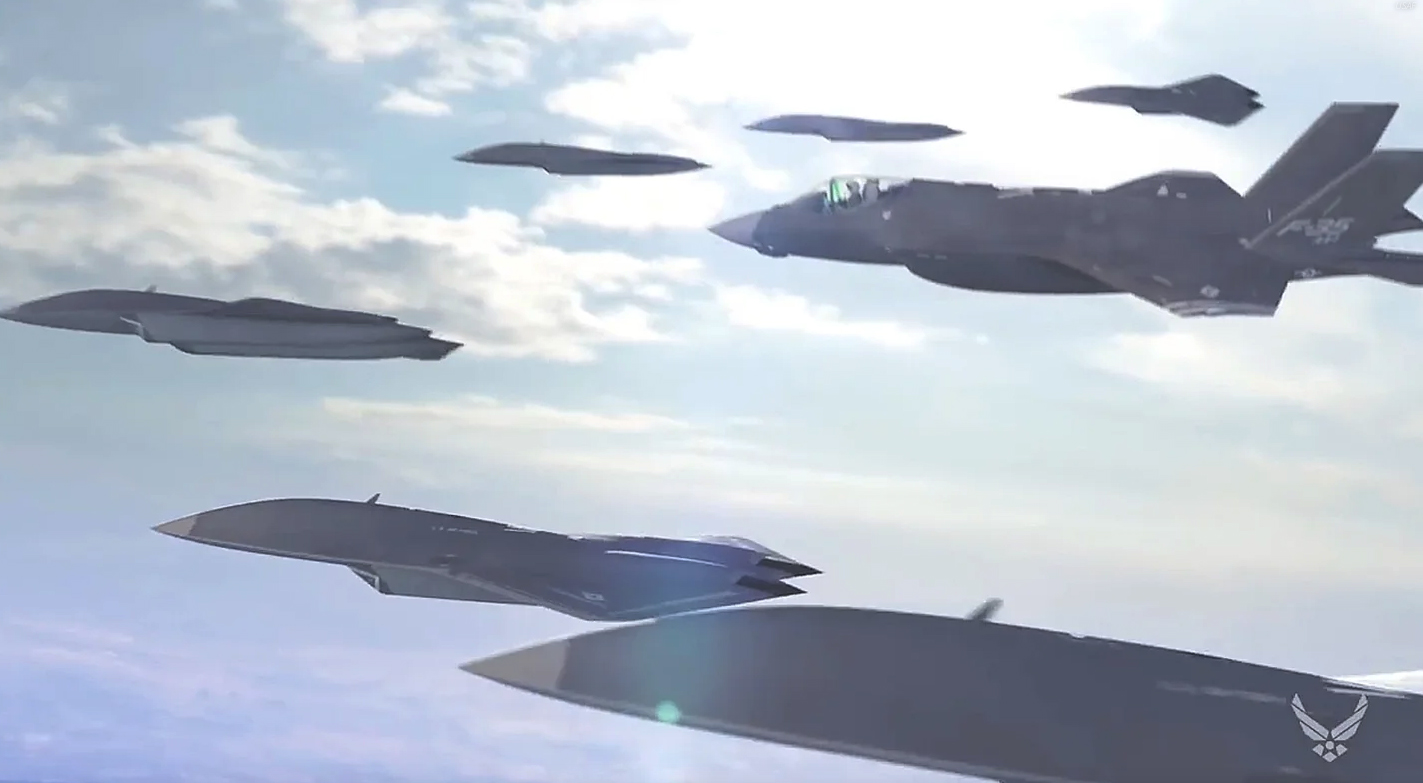Chengdu Aircraft Corporation is one of two preeminent fighter manufacturers in China, and arguably the best known these days. It has two indigenous fighter designs in production that currently serve with the People’s Liberation Army, the J-10 single-engine mid-weight fighter and the J-20 heavy stealth fighter. The J-20 still arguably stands as China’s most stunning manned aircraft achievement, and the development of it as the country’s first stealth fighter continues to evolve to this very day. Yet that is certain to change in the not-so-distant future as China continues its rapid expansion of air-combat capabilities and manufacturing know-how. Satellite images The War Zone recently obtained — dated Oct. 29, 2021 — of the company’s flight test airfield, which is located adjacent to its plant in its namesake city, is indicative of this. It shows five J-20s on the ramp, 18 J-10s, a couple of drones, and one very unusual airframe unlike any other.
The airfield and its surrounding infrastructure, which sits in an urban area, has become somewhat famous for all the ‘leak’-like images and video clips that have emerged from it over the past decade or so depicting Chengdu’s latest and greatest fighter configurations. The facility has also seen immense upgrades and expansion in recent years. Major changes to the primary flightline, and everything from the rapid appearance of a new aircraft display park to new industrial buildings seems to be the norm. In fact, an entirely new industrial area and another large group of hangars with its own flightline are currently under construction on the northwest side of the airfield.
Clearly, keeping up with China’s ravenous appetite for combat aircraft is resulting in an aggressive expansion in all directions at the airfield.



The puzzling airframe in question seems to have first appeared in early-to-mid 2021, next to a standalone hangar on the northeastern side of the airfield. The hangar appeared in 2019 but was part of a much larger project to build out and enhance the entire northeastern area of the airfield and to reconfigure its flightline, which runs offset by a taxiway along the runway’s eastern edge.


As to what this thing actually is, we really don’t know. It appears to be a large modified diamond-like delta planform with a relatively thin nose section. The wingspan is roughly that of a J-20, so we are not talking about a small airframe here. The most interesting element is that it is clearly a tailless design. In fact, when I first spotted it, it immediately reminded me of the X-44 Manta concept art from years ago. It turns out, at least to our knowledge, that the X-44 Manta program never came to be. The X-44 we got instead was a small flying-wing technology demonstrator built in-house by Lockheed’s Skunk Works that would serve as a building block for other unmanned flying wing platforms, such as the RQ-170 Sentinel. You can read all about this unique history in these past exclusives of ours.

Still, we can be relatively confident that at least one — and, more likely, multiple — tailless tactical fighter-like designs were flight tested clandestinely at some point, most likely in the 1990s and 2000s. The advantages of a tailless design are multi-fold, the biggest of which is a major improvement in broadband low-observability against a larger number of radar types operating across a wide range of frequencies. It also better optimizes a stealthy aircraft for reduced radar signature from side and rear perspectives, beyond the head-on aspect. Another feature of this design concept is better efficiency via less drag for sustained high-speed dashes and sustained cruise. With a large modified delta wing, lots of gas can be carried and there is plenty of room for a large internal weapons bay. It also simplifies a design, at least structurally, and reduces weight.
The biggest downside is that achieving stability is far more challenging without vertical tails, and maneuverability would be reduced, although this can possibly be offset to some degree through thrust vectoring. Just the possibility of realizing such a design is highly dependent on advanced fly-by-wire digital flight control technology and the software that underpins it. But really, such a design would be more about range, payload, speed, and low observability, not super maneuverability. This is why some of us have begged for such a platform for years, which far better suits America’s potential threat realities and operational hurdles than short-ranged fighters that are optimized to hide from X-band fire-control radars and that trade critical performance capabilities for less relevant maneuverability.
These wishes will likely be finally granted in the form of the Air Force’s Next Generation Air Dominance (NGAD) system, and quite possibly the Navy’s similar initiative, too. But even before then, a tailless ‘FB-22’ concept was examined in the mid-2000s, among other potential applications for such a configuration. So, this isn’t actually new, but the concept, paired with advances in digital flight-control systems and manufacturing capabilities, is bubbling up to the top when it comes to what’s next in tactical aviation.

An unmanned configuration like this could provide the J-20 with a highly logical, high-performance, and potent ‘loyal wingman’ unmanned combat air vehicle (UCAV). The USAF has posited very similar designs in its own concept art and China is known to be pursuing other designs for manned-unmanned teaming, as well. Such an aircraft could also be used independently as its own semi-autonomous UCAV, too.

If a tailless fighter or UCAV design is indeed the concept reflected in the airframe we are seeing in the satellite images, it doesn’t mean that it is flightworthy. Quite the opposite could be true. It could be a mock-up of a configuration being pursued—or one that was passed over. It could also be a radar cross-section model to test the design’s radar signature. In fact, it looks eerily similar to a radar cross-section test model we have recently seen at an American radar cross-section testing facility. It could also be something else entirely.
So, as it sits now, this is an intriguing development, but we will need to see more of this article to truly understand the intent behind it. Still, even if it is a mock-up of some sort, it isn’t surrounded by other mock-ups. Something about it is unique.
Contact the author: Tyler@thedrive.com
